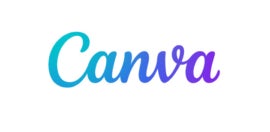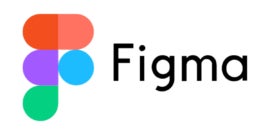- Best for complex data: Lucidchart
- Best for collaboration: Miro
- Best for creative expression: Canva
- Best for individuals and small teams: Mindomo
- Best for complex workloads: Xmind
- Best for spatial planning: Figma
If you could take a snapshot of an idea and translate it from your mind into a perfect visual for your team, you would, but unfortunately it’s not that simple. The next best thing is mind mapping your ideas and relationships together in easy-to-interpret graphics and visualizations. Depending on how you set this visualization up, you can use it to brainstorm, explain a project or tasks or improve team learning.
Whatever goal you have in mind, mind maps are amazing visuals that can bridge the gap between internal thoughts and group comprehension. This guide to the best mind mapping software explores the capabilities of free software solutions for teams of all sizes.
Featured Partners TechRepublic is able to offer our services for free because some vendors may pay us for web traffic or other sales opportunities. Our mission is to help technology buyers make better purchasing decisions, so we provide you with information for all vendors — even those that don’t pay us.
Top free mind mapping software: Comparison table
The table below compares mind mapping software based on important design and collaboration features. All applications on this list have a free plan and in the table, their first paid plan is the listed price.
| Software | Mind mapping | Customizations | Integrations | File sharing | Free plan available | Pricing for paid plans |
|---|---|---|---|---|---|---|
| Lucidchart | Yes | Yes | Yes | Yes | Yes | $7.95 per month for one user |
| Miro | Yes | Yes | Yes | Limited | Yes | $8 user/month, billed annually |
| Canva | Yes | Yes | Yes | Yes | Yes | $14.99 per month or $119.99 per year for one user |
| Mindomo | Yes | Yes | Yes | Limited | Yes | $5.50 user/month, billed annually |
| Xmind | Yes | Yes | Yes | Limited | Yes | $4.99 per month for one user, billed annually |
| Figma | Yes | Yes | Yes | Yes | Yes | $12 user/month, billed annually |
Lucidchart: Best for complex data

One of the best data visualization solutions with a free plan is Lucidchart. The software is designed to help teams create custom visualizations with their data. In the Free plan, you can comment on, share and download your designs. You also have access to basic data linking and the ability to use presentation mode.
The company Lucid Software also offers a virtual whiteboard tool with freehand drawing capabilities called Lucidspark. It includes a free plan among its pricing options as well.
Pricing
Lucidchart offers monthly and annual billing options, but the cost difference is not disclosed. Instead, they disclose a starting price along with discount costs if you bundle with their Lucidspark whiteboard tool.
- Free: Free for three documents, 60 shapes per document and 100 templates.
- Individual: Starts at $7.95 for one user and offers unlimited documents and objects and premium templates.
- Team: Starts at $9 per user and offers advanced controls and integrations.
- Enterprise: More collaboration features, automations and access to Lucidspark and Lucidchart; contact sales to learn more.
Features
- Templates and shape libraries.
- Ability to generate diagrams.
- Data visualization for org charts, mind maps, diagrams, dynamic shapes and smart containers.
- Integrations with popular apps like Slack, Asana, Loom, Salesforce, Zapier, and Microsoft and Google suites.
Pros
- Great for complex data visualizations.
- Easy collaboration through commenting, link sharing, downloading and publishing features.
Cons
- Limits on importing and data connections.
- Pricing isn’t as transparent as other applications.
- Free plan is very limited in terms of data visualization and importing.
Miro: Best for collaboration

Teams that use Miro can collaborate and communicate effectively with integrations, guest user roles, video chats, tutorials and interactive presentations. Miro’s Free plan is limited in terms of collaboration but still enables users to develop designs with three boards and access to the template library. Free plan users can also record videos of their boards, use presentation mode and access all core integrations like Zoom, Slack and Sketch.
Pricing
- Free: $0 for access to unlimited users, three boards and five Talktracks.
- Starter: $8 per user per month, billed annually, or $10 per user billed monthly.
- Business: $16 per user per month, billed annually, or $20 per user billed monthly.
- Enterprise: Offers higher levels of support, security and scalability; contact sales for pricing information.
Features
- Prebuilt and custom templates.
- Ability to add guests and visitors.
- Communication and collaboration for groups with presentations, video chat, Talktracks and voting features.
- Developer platform features like Enterprise APIs, REST APIs and web SDKs.
Pros
- Great collaboration capabilities.
- Over 2,500 templates from Miro and the community available in all plans.
- Free plan gives access to over 100 integrations.
- Five Talktracks to create interactive tutorials are available in the Free plan; unlimited Talktracks are available in paid plans.
Cons
- Paid plans can get costly, depending on how many users you need.
- Free plan board exporting is limited.
- No communication, customization, or guest and viewer user roles are available in the Free plan.
Canva: Best for creative expression

Canva has become a staple for many online brands’ social media content because of its diverse design options. But few users know that you can import your own media and text to build your own diagrams and ideas into mind maps. The tool has enough shapes and customization options to visualize anything you can imagine, and you can hand-draw shapes as well.
Pricing
Canva’s Free and Pro plans are available for single users, while Canva for Teams is available for teams of people. Teams with more than five users will have a more customized pricing calculation for their subscription plan. Discounts may be available for educators as well.
- Canva Free: $0 for one user who receives access to all free media and graphics.
- Canva Pro: Allows one user to receive access to more advanced and premium features for $14.99 per month or $119.99 per year, depending on selected billing cycle.
- Canva for Teams: Includes access for up to five users at $29.99 per month or $300 per year, depending on selected billing cycle. Larger teams can access this plan for a higher fee.
Features
- Online and mobile apps.
- Access to graphics, images, video, audio, stickers and over 250,000 free templates.
- High variety of media for the free version, including 100 different types of templates and over a million graphics and photos.
- Five GB of storage and file sharing.
- AI generation.
Pros
- Extremely easy to learn and get started.
- Offers templates and media for most company branding needs.
- Simple customization for graphics; users can change colors, sizes and image crops.
- Fonts support text effects, animation and customizable letter spacing.
Cons
- Limited export options.
- Niche multimedia assets are usually not free.
- Collaboration inside the app is reserved for the highest-tier plan.
Mindomo: Best for individuals and small teams

If you’re looking for a feature-rich data visualization tool with project management capabilities, Mindomo is worth considering. The vendor offers data visualization, task management and collaboration capabilities, and its Free plan includes mind maps, concept maps, organigrams, fishbones and Gantt charts. Teams can also access viewer mode, real-time collaboration and image galleries in the Free version.
Pricing
- Free: $0 for three diagrams and access to mind mapping features.
- Premium: Access for one user for $5.50 per month, billed annually.
- Professional: Access for one user and up to five guest users for $13.50 per month, billed annually.
- Team: $5.50 per user per month, billed annually. A three-user minimum is required, meaning this tool will cost at least $16.50 per month, billed annually.
Features
- Diverse data visualization options, including mind maps, tree organigrams, outlines, timelines and more.
- Real-time collaboration on designs, chat, audio recording and group sharing.
- Ability to customize diagram themes, text formatting and diagram styling.
- Task management capabilities.
- Exporting, importing, bulk downloads and printing options.
Pros
- Free plan includes access to all data visualization options.
- Collaboration and customization features are also available in the Free plan.
Cons
- Free plan does not have access to integrations, storage or support.
- Limited exporting and importing in the Free plan.
- Paid plans have low storage space relative to competitors.
- Most plans only allow one user.
Xmind: Best for complex workloads

Xmind is a great choice for teams looking for simple subscription plan options. They have a Free plan with the ability to create designs and a paid version with extra features for larger teams and use cases. The Free plan is designed for personal use and the paid version is suited for larger, enterprise-level teams. Common organization types that can benefit from this software and its features include nonprofits, educational institutions, government departments and enterprise teams across industries.
Pricing
Both the Free and Pro plans are designed for single-user subscriptions. If you need more Pro subscriptions, Xmind offers the Multi-user Subscription plan, which allows you to buy multiple instances of Xmind Pro at once with discounts for additional users after the first four. Additionally, discounts are available for nonprofit and academic organizations.
- Free plan: $0 for individuals looking for a personal-use solution; commercial use is not permitted.
- Pro plan: $4.99 per user per month, billed annually, or $5.99 per user billed monthly.
Features
- Unlimited maps in all plans.
- Visualization options include mind maps, org maps, fishbones, logic charts, timelines, tree tables and matrices.
- Complex data options and ability to work with math equations.
- Ability to add labels, notes, stickers and illustrations.
- Audio note generation.
- Customizations with colors, themes and hand-drawing.
Pros
- Full visualization capabilities are available in the Free plan.
- Organization and task tracking is included for projects.
Cons
- Limited exporting options in the Free version.
- No access to support or security in the Free plan.
Figma: Best for spatial planning

Figma is a popular wireframing and design tool often used for visualizing web and mobile applications. The software can be used to visualize any project or process, using its intuitive interface. You can add media and animation, export as PDF and easily share projects with links. The free Starter plan allows up to three active design files, as many drafts as you want and access to most features.
Pricing
The pricing information listed below is for Figma, which is primarily for design and development projects. Users who are interested in whiteboarding will want to look at pricing information for FigJam instead.
- Starter: $0 for one active project, three design files, unlimited personal files and unlimited collaborators.
- Figma Professional: $12 per user per month, billed annually, or $15 per user billed monthly.
- Figma Organization: $45 per user per month, billed annually; no monthly payment option.
- Enterprise: $75 per user per month, billed annually; no monthly payment option.
Features
- File templates, plugins and widgets to upgrade workflows.
- Organization libraries and dedicated workspaces.
- Integrations with popular software like Asana and Slack.
- Customizations.
- Developer mode for transferring designs into code for app development teams.
- Advanced design tools for creating vectors and layer manipulation.
- Collaboration and design comments.
Pros
- Large canvas space is available to create intricate visualizations.
- Easy object manipulation and media importing.
- Anyone can export designs and revert active files to drafts when moving on to a new project.
- The Free plan includes access to unlimited collaborators, unlimited drafts, three Figma files and three FigJam files.
Cons
- Most collaboration features and advanced development features are in paid plans.
- Paid tiers are too expensive for small teams.
Key features of mind mapping software
When it comes to design tools for mind mapping, it’s important to find something intuitive that offers plenty of useful capabilities. These are some of the best features to look for when getting started with mind mapping software:
Mind map generation
Not all tools will have this option, but the ability to automatically generate mind maps with your data is pretty great. Some will also have a dedicated tool with easy presets, and the best ones will have ready-to-go templates. Other applications may require you to manually build your mind map of ideas and relationships, but hopefully, they still have customizable shapes, text and elements. If they don’t have at least that, they’ll take too long to use and likely won’t be worth the trouble.
Customizations
If you have team branding, your own design principles or accessibility standards to follow, then customization is a priority. It’s also a priority for those who just enjoy personalizing designs. An application that has customizable templates, fonts, images, graphics and handdrawing tools will give you everything you need to create purpose-built mind maps that match your requirements.
Integrations
If your team goes with a solution like Figma or Canva, you will want to make sure it integrates with your tech stack. Tools for just design won’t have many project management, organization or scheduling features, so you may want to know which software can easily integrate to fill in the gaps.
File sharing
It can feel like pulling teeth to find tools with ideal export and import settings for your particular files and use cases. Oftentimes, you’ll need to convert files so they’re appropriate for workflow collaboration and sharing. Some mind map platforms need specific formats like print, PDF, JPEG, PNG or Word,.. It also may be easier to share direct links to the app for collaborative editing, but not all tools allow more than one editor. With all of these intricate variables in mind, make sure you take the time to consider what will make or break your import and export needs.
Shape libraries
While an entire library of shape options is common, it may not be offered in project management apps or tools that aren’t dedicated to mind mapping. If you do find this option, it can speed up development and provide access to sleeker and more professional designs. Some of these shape libraries even allow you to save your custom shapes for future projects.
SEE: 6 Best Cloud-Based Project Management Software for 2023 (TechRepublic)
How do I choose the best free mind mapping software for my business?
Are your ideas and project visualization needs simple or complex? That should be the first question you ask yourself, because the answer will help you determine features, integrations, customizations and cost requirements. Some of the software listed in this guide, like Figma and Canva, are extremely effective for creating personal designs while still maintaining affordability.
If you’re working with complex ideas, Lucidchart, Miro and Xmind are adept at handling heavy data. But teams that just need tools for mind mapping will find Xmind, Mindomo, Lucidchart and Miro have tools geared toward that purpose. Tools only for mind mapping or diagramming can get costly and will often have limits on file sharing so it’s important to take your time when choosing.
The good news is all these products have a free plan that you can use to get a taste of the software before committing. The Canva, Figma, Xmind and Mindomo free plans may be enough for you to get the job done, while Lucidchart and Miro have fewer free tools but still enough to get your feet wet. You won’t know for sure until you give them a try so make sure to set aside time to really test the software and its different capabilities.
Methodology
The top software in this free mind mapping software product guide was chosen based on whether each solution had a functional free version, overall ease of use and the ability to create mind maps or other visuals. Software capabilities for collaboration and customizations were also considered, as well as the ability to create advanced detailed content. Affordability was also a consideration, though we focused most of our attention on the cost and robustness of free tiers rather than the expenses that come with paid tiers.




